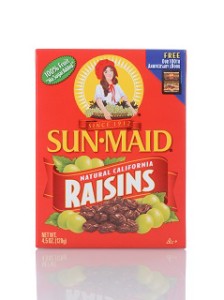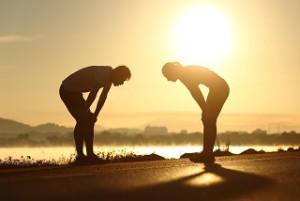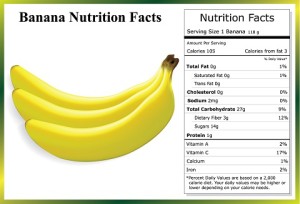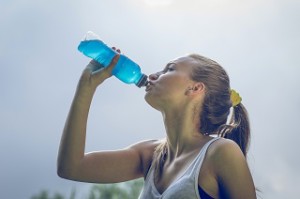How to Avoid “Bonking”
By Chris Newport, Nutritionist and Head Coach
Bonking is an endurance athlete’s worst nightmare.
To “bonk,” “hit the wall,” “explode,” or “pop” are a few slang terms used to describe depletion of glycogen, the stored form of carbohydrates used for particularly intense or long workouts.
Once you’ve exhausted your glycogen, it feels like you’ve literally run into a wall due to the rapid and extreme fatigue.
Ever experience that? Yeah…feels terrible, right?
It typically occurs somewhere around the 3rd hour of exercise, when your glycogen stores are depleted if you’ve not been fueling properly. Hang out somewhere around mile 21 of a marathon and you’ll likely witness it.
So if you want to avoid the dreaded bonk, here’s a few things you’ll need to know before headed out for your next long race:
How to prevent bonking
Carbs are your friend when it comes to endurance exercise (as are your fat stores, but that’s another blog…). They may improve performance and delay fatigue.
The consequences of not consuming carbohydrates before and during exercise are, naturally, decreased performance and fatigue, causing an athlete to slow down or stop (aka “bonk” or just plain give up…and really…who wants that?!?).
More importantly, carbohydrates during exercise reduce the likelihood of hypoglycemia, or low blood sugar, whose symptoms include confusion, dizziness, headaches, weakness, anxiety, shakiness, loss of coordination, and blacking out.
How many carbs do you need for exercise?
For exercise lasting over 1 hour (like sprint distance triathlons or half marathons), but less than 3, about 30-60g of carbs should be sufficient. For exercise lasting longer than 3 hours, it’s critical to replace lost glycogen, or bonking is inevitable (unless you’re crawling).
The upper limit of how many carbs you can use during exercise is about 1g/minute, although I’ve seen research of cyclists able to ingest upwards of 90g per hour. The jostling nature of running prevents this from happening. Keep in mind that competing in the heat decreases the amount of carbs you can absorb by approximately 10%.
Carbohydrate needs vary based on your size and workout intensity and ability to use fat for fuel. The bigger you are, the more you burn. The faster you go, the more carbs you use, which in turn, means you can digest even less (one of the main causes of nausea in endurance sports).
While general guidelines that these are a good place to start, we recommend our metabolic testing (our fueling formula test) to determine how many carbs you can take in to optimize performance without GI distress.
How to replace carbs during exercise
There are tons of products on the market that provide carbohydrates like sports drinks, energy bars, chews, or gels.
Before diving into something you’ve never had before, it’s also important to “train your gut” just like you train your body to get accustomed to eating and drinking during exercise. Athletes who aren’t used to eating or drinking during exercise are twice as likely to have gastrointestinal symptoms.
Just like marathon legend Bill Rodgers said, “More marathons are won or lost in the porta-potties than at the dinner table.”
Real food during exercise works!
Your body is very accustomed to real food (or at least, I hope it is!).
In fact, real food has been researched to work just as well as sports drinks.
Bananas have been researched as an fuel source as well as raisins (and gosh-darnit, they’re both so portable!)

Are there side effects to consuming calories in the form of sports drinks?
In fact, recent research suggests 30-90% of distance runners experience gastrointestinal symptoms, including nausea, vomiting, abdominal cramping, or diarrhea. Not only are they inconvenient, but they can have lasting negative health consequences. Take the video and ensuing story of pro triathlete Chris Legh. Yikes, is all I can say about that!
It’s particularly important that sports drinks aren’t over concentrated or diluted (PLEASE don’t water down your sports drink! If it’s too sweet, then try another one with less fructose (what makes fruit sweet) or sucrose (table sugar that contains fructose).
You won’t have to worry about this if you are drinking according to your specific hydration needs based on your sweat test.
We generally create Infinit Custom Formulas for people based on their fueling and hydration needs, but we also make other recommendations based on what they prefer and what matches their needs.
For example, we have a lot of folks who really like Tailwind or Skratch, but may need a little more electrolytes from our favorite Saltsticks.
Personally, I like Gu Brew (2x sodium), which perfectly matches my sweat.
Your carb choices have to taste good!
It may sound silly, but if you have no desire to eat or drink what you’ve toted along on your ride or run, it’s just dead weight you’re carrying around, and you’ll be staring at that “wall” sooner than later. You should get excited about your drink, gel, chew or food choice!
For example, I’ll have my Ironman athletes choose one Infinit flavor for the bike and another for the run (and perhaps some caffeine too) to avoid flavor fatigue.
I used to annoy my training buddies every time I would drink my homemade sports drink, since I would follow every sip with “Mmmmm.” That’s the point of a good sports drink!
Make a Fueling Plan
While research suggests that both real and engineered food (like sports drinks, gels, etc) works, it’s important to develop a personalized nutrition plan based on your preferences, medical conditions, race distance, environmental conditions, etc.
Learn more about our sports nutrition programs here or book a Free Discovery Session here.






